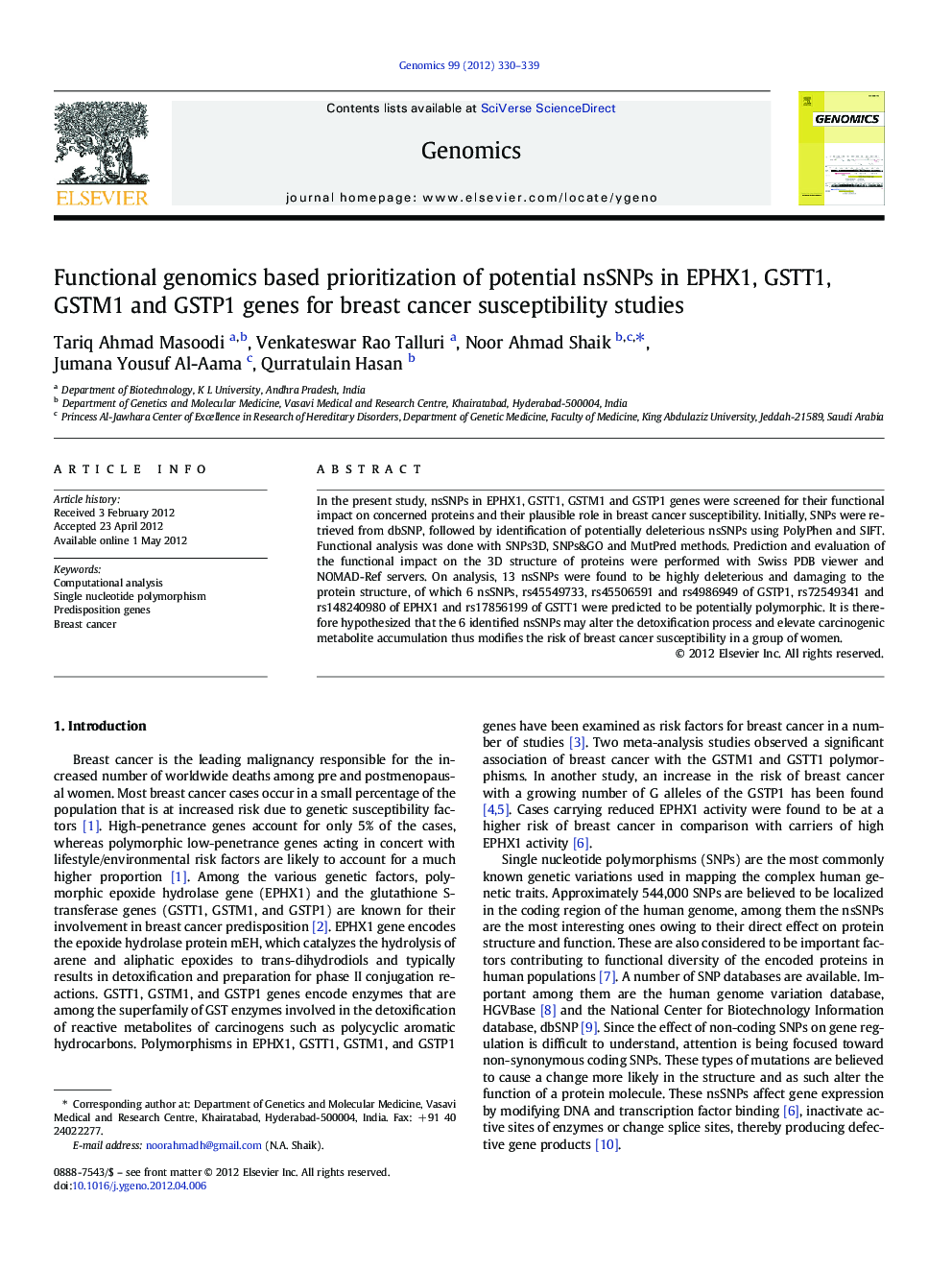| Article ID | Journal | Published Year | Pages | File Type |
|---|---|---|---|---|
| 2820924 | Genomics | 2012 | 10 Pages |
In the present study, nsSNPs in EPHX1, GSTT1, GSTM1 and GSTP1 genes were screened for their functional impact on concerned proteins and their plausible role in breast cancer susceptibility. Initially, SNPs were retrieved from dbSNP, followed by identification of potentially deleterious nsSNPs using PolyPhen and SIFT. Functional analysis was done with SNPs3D, SNPs&GO and MutPred methods. Prediction and evaluation of the functional impact on the 3D structure of proteins were performed with Swiss PDB viewer and NOMAD-Ref servers. On analysis, 13 nsSNPs were found to be highly deleterious and damaging to the protein structure, of which 6 nsSNPs, rs45549733, rs45506591 and rs4986949 of GSTP1, rs72549341 and rs148240980 of EPHX1 and rs17856199 of GSTT1 were predicted to be potentially polymorphic. It is therefore hypothesized that the 6 identified nsSNPs may alter the detoxification process and elevate carcinogenic metabolite accumulation thus modifies the risk of breast cancer susceptibility in a group of women.
► Nonsynonymous SNPs in EPHX1, GSTT1, GSTM1 and GSTP1 genes were screened for their functional impact on concerned proteins. ► A total of 1,051 SNPs were retrieved from dbSNP, from which 6 nsSNPs, namely, rs45549733, rs45506591, rs4986949, rs72549341, rs148240980 and rs17856199 were predicted to be potentially polymorphic with higher scores of SIFT, PolyPhen, SNPs3D, SNPs&GO and Mutpred. ► The mutant models of these nsSNPs showed high energies and RMSD values compared to their native structures. ► It is therefore hypothesized these nsSNPs are potentially polymorphic.
